PBP Correct-a-thon Besançon 2023 #3: the case of Besançon Ms 4
PBP Correct-a-thon Besançon 2023: BM Besançon Ms 4
This post was written in the context of the Paris Bible Correct-a-thon which took place in Besançon, France in January 2023.
Encountering AI and the Bible
The Paris Bible Project (PBP) was a week long immersive project at the Université de Franche-Comté in January 2023. We worked on Manuscript 4 (ms 4) from Bibliothèque Municipale de Besançon, a Bible thought to be written by a Franciscan monk in the middle of the 13th century.
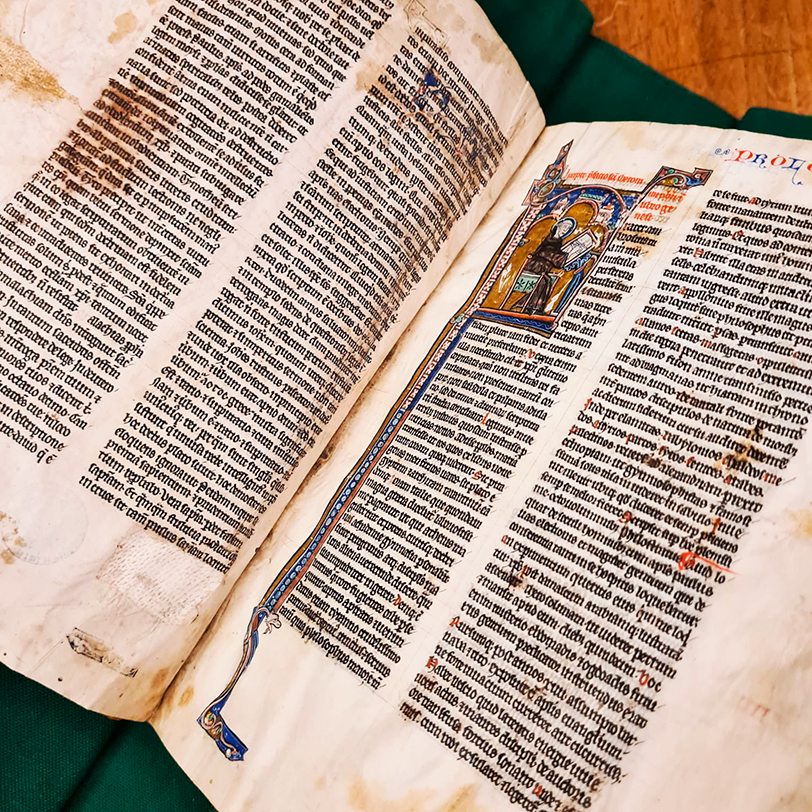
Fig.1: BM Besançon Ms 4
Our first impression was that this wasn’t a luxurious or illustrious copy. It isn’t richly illustrated except for the initials of each book. All chapters start with simple red initials that are spreading toward the marginalia in the form of small plants and flowers. The writer’s hand demonstrated a pretty clear gothic script which was uniform and clear. Adjusting to reading this hand was challenging, but because of the uniformity it became easier. In MS 4, we didn’t find the beginning of Genesis - a mystery which we solved later in our visit to Bibliothèque Municipale de Besançon when we were able to see this manuscript up close.
Encountering a handwritten bible transcribed by AI was a new experience for us, which meant we had to tackle problems without any previous experience. Engaging an ancient document through AI is interesting because it requires finding common ground between the manuscript, the reference bible transcription, and transcription from Transkribus, which made us suspicious of each document after a while. Once we found common ground between these documents, it became easier to correct the transcription.
In the beginning we were confused why some ‘i’ letters had a mark. After reading half of the page, we realized that the scribe used “i” with a mark when the word contained “u”, “m”, or “n”. An obvious attempt to help the reader distinguish between the minims - confusing to our untrained and print-obsessed eyes. The AI wasn’t effective in identifying these characters either, leading to numerous errors in words with these letters.

Fig.2: Recognizing different letters
Another interesting AI challenge in our bible concerned the layout. Because of the marginalia, sometimes the layout analysis included things not a part of the text by generating new lines of writing with only a single letter. This was interesting as it made us question how potentially sensitive the AI regarding layout creation and the transcription processes.
| Marginalia | Transcription | Explanation |
|---|---|---|
 |  | Here, the AI recognized the little flourish in the margins as the letter ‘g’.(Fol.6) |
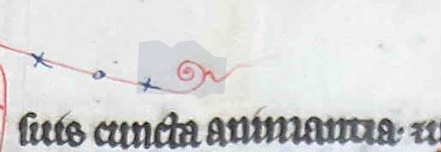 |  | Here, the AI recognized another pattern as letter ‘i’ (Fol.6) |
 |  | Here, the AI combines the marginalia with the punctuation and we can see a question mark at the end of the sentence. (Fol.6) |
The occurrence of these errors made us more diligent as we progressed with our corrections.
Teamwork and Transcription
Conducting this work required us to utilise an online text of Genesis as a point of reference for comparison with our manuscript. This is a significant aspect to highlight, since having a reference text allowed us to overcome the challenge of not having extensive knowledge of the Biblical text and helped us to make informed decisions in our analysis.
The quite readable handwriting of the scribe made our analysis more efficient and allowed us to comprehend the text with greater clarity. We still had difficulties with the abbreviations inside the text, not only because of our unfamiliarity with paleography, but because of the different ways in which the same word could be abbreviated.

Fig.3: Two different abbreviations of "præesset" in the same line: preēēt and p̄eēt. (Fol.5)
One of the things that caught our attention while transcribing were the symbolic variants, since sometimes they did not seem to correspond to the symbols in the guidelines that had been provided to us. In the following picture, you can see two abbreviations for que and us. Using the transcription guidelines, we were encouraged to transcribe both as ‘3’, while the scribe was making a clear distinction between two (Fol.5):

Fig.4: Two abbreviations for *que* and *us*
Our biggest complication was with the macrons, because many times they did not correspond to what the guidelines indicated that they should look like and the different variants of the symbols did not make it easy to decide what to add. That is why specifically with the macrons we decided to add the symbol as it was present in the text without considering the meanings of the signs as something primordial. This is because, after all, the PBP has a lot to do with the different styles that scribes performed in different locations, so it is difficult to follow a completely standardised model. So there are many variations depending on the manuscripts.
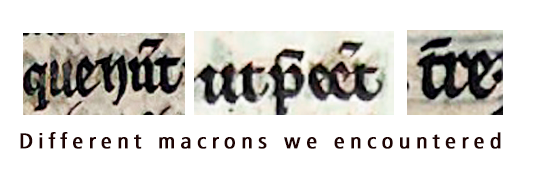
Fig.5: Different macrons we encountered
What was fascinating about this manuscript was observing the scribe’s efforts to present the content in a practical manner, as evidenced by the use of Roman numerals for certain words as we can see in the following image (Fol.5-6):
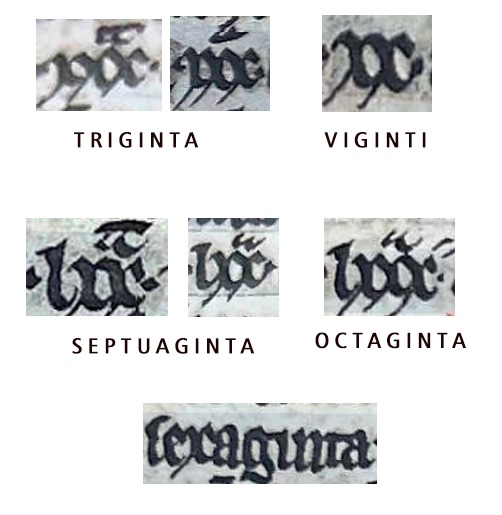
Fig.6: Roman numeral usage in BM Besançon ms 4
It was challenging to come up with symbols for these numbers through the transcription guideline, and we had to come up with the best corrections possible.
The Clumsy Scribe and the Mysterious Hand
Apart from the different abbreviations or marks, one of our challenges was the forgetfulness of the scribe. We were able to spot more than five mistakes in just three pages of Genesis. The scribe sometimes changed places of the words, forgot a word, or even a whole line.
A Table of Mistakes
| Example Images | Description | Explanation |
|---|---|---|
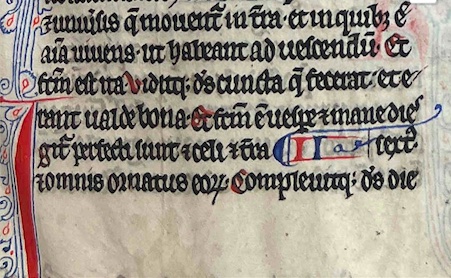 . . | Et factum est vespere et mane, dies sextus. Igitur perfecti sunt cæli et terra, et omnis ornatus eorum. | The scribe either forgot the word ‘sextus’ or wrote it at the end of the next line to have a beautiful red initial at the beginning of the new chapter. Whether this was his forgetfulness or a simple style decision, it was very confusing. We discussed where to write ‘sextus’ and decided to leave it in the same line. If we accept this as a stylistic decision, we can see the importance of proper usage of the layout and abbreviations to create mistake-free text.(Fol.5) |
 | The scribe realized the missing word qꝺ́ after writing hominum so he crossed out hominum to correct his mistake. (Fol.8) | |
 | Reversed order of words. | In the reference bible and other bibles used in this project, the order of these two words are “uterque nudus”; but here it is reversed. (Fol.6) |
It was challenging to correct the transcription when a word disappears to only appear in the following line or to not appear at all! From time to time, the scribe missed some lines, which were later added to the marginalia by another, mysterious hand. We have decided the hand does not belong to the same scribe as the handwriting is different (Fol.6):


Fig.7&8: Different hand examples. The main text block (above) and the correction (below)
Normally “Multiplicabo ærumnas tuas, et conceptus tuos” should appear right after “dixit.” Later, the mysterious hand pointed out the mistake by putting a + next to the line and they wrote the missing part to the bottom marginalia. Sometimes, they correct it right next to the line(Fol.6):

Fig.9: Corrections
It was a challenge to think about how to direct AI to confront these issues while factoring in human error on both our part as well as a scribe hundreds of years ago. We were also curious about how these types of human errors would affect the overall outcome of the project.
The scribe’s mistakes and the appearance of the mysterious hand created a different connection between us and the object itself as we come to humbling realizations: we were just one of many who looked at this book from a critical perspective and we kept ignoring human error while we were carefully searching for AI’s mistakes.
The Physical Object
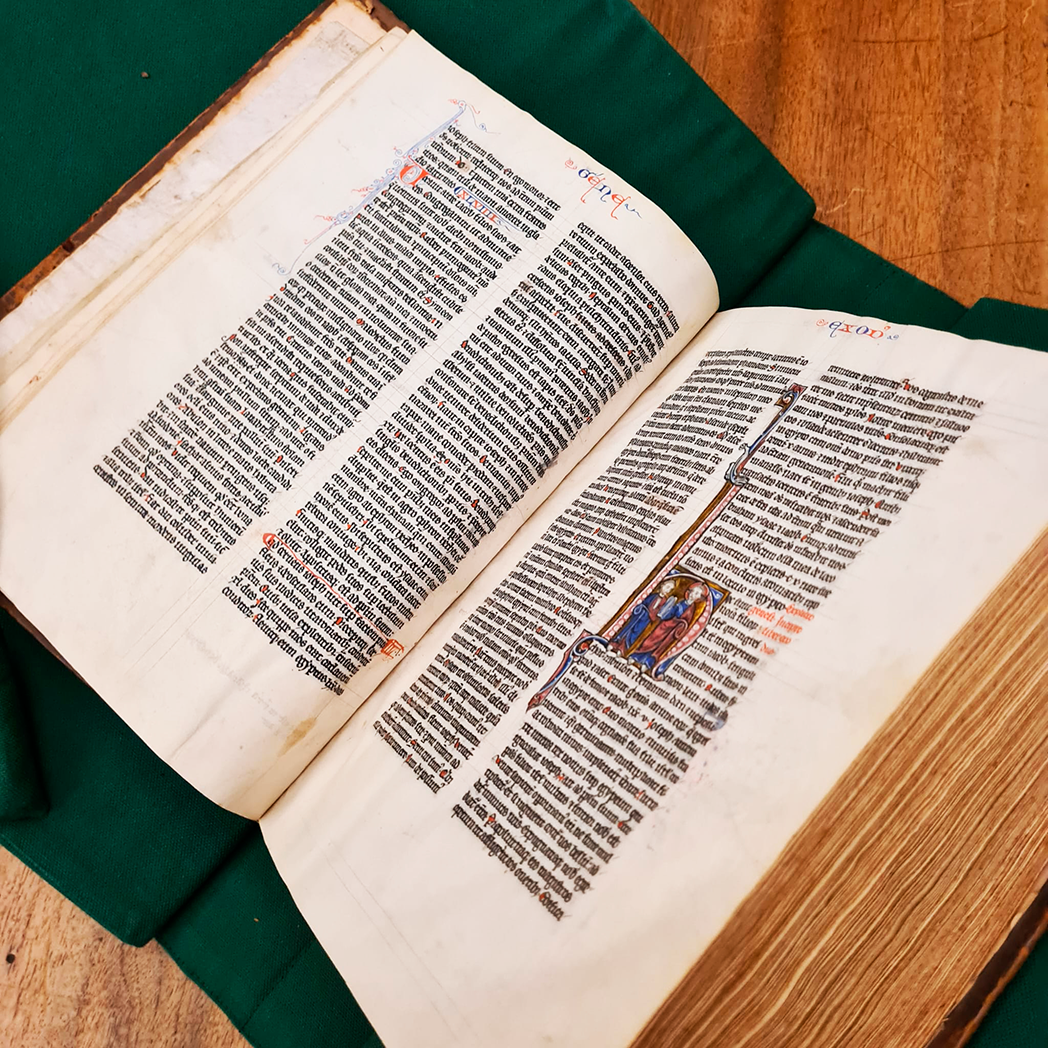
Fig.10: BM Besançon Ms 4, last page of Genesis and first page of Exodus
We went to visit the Bibliothèque Municipale de Besançon halfway through the week. It was good for a change of pace, and we were privileged enough to see the physical copies of some of the bibles that we had been working on. Viewing the raw material allowed us to view the book as an object in and of itself rather than just experience it as a page-by-page scan we could enlarge until it became mere pixels on a screen. We were shown several Paris Bibles that are in the permanent collection of the library.
The manuscript that our team worked on was included in this selection and being able to interact with the book changed our perspective. This particular manuscript was much larger than we had originally anticipated. It is a manuscript that had been rebound in calf leather. The first page of the Genesis chapter was missing and, although we knew this from the scans, it was interesting to see how this factored into the presentation of the text where it had been rebound. Also, according to the library’s catalog, two miniatures are missing on the 243rd and 282nd folios. Where the text trumped the scans was being able to view the illustrations up close. While the scans are a great way for being able to create an archival record, being able to view the Bibles themselves was pretty special. It was interesting to hear that David Wrisley had travelled so far to view them himself, where few who actually live in the town even are aware that this is a potential interest. Indeed, the benefit of the PBP is to be able to look at such objects in history and make them accessible and interesting; to provide such a clear glimpse into what one object can bring to a much broader sphere of influence.
Team
Sharon Hassive Guerra Álvarez, Nina Jacobson, Sümeyye Topkara.
Suggested citation
Guerra Álvarez, Sharon Hassive, Jacobson, Nina and Topkara, Sümeyye. (29 May 2023). PBP Correct-a-thon Besançon: Besançon Ms 4 Paris Bible Project. https://doi.org/10.5281/zenodo.8040632
This post is published with a CC BY-SA-NC 4.0 International license.